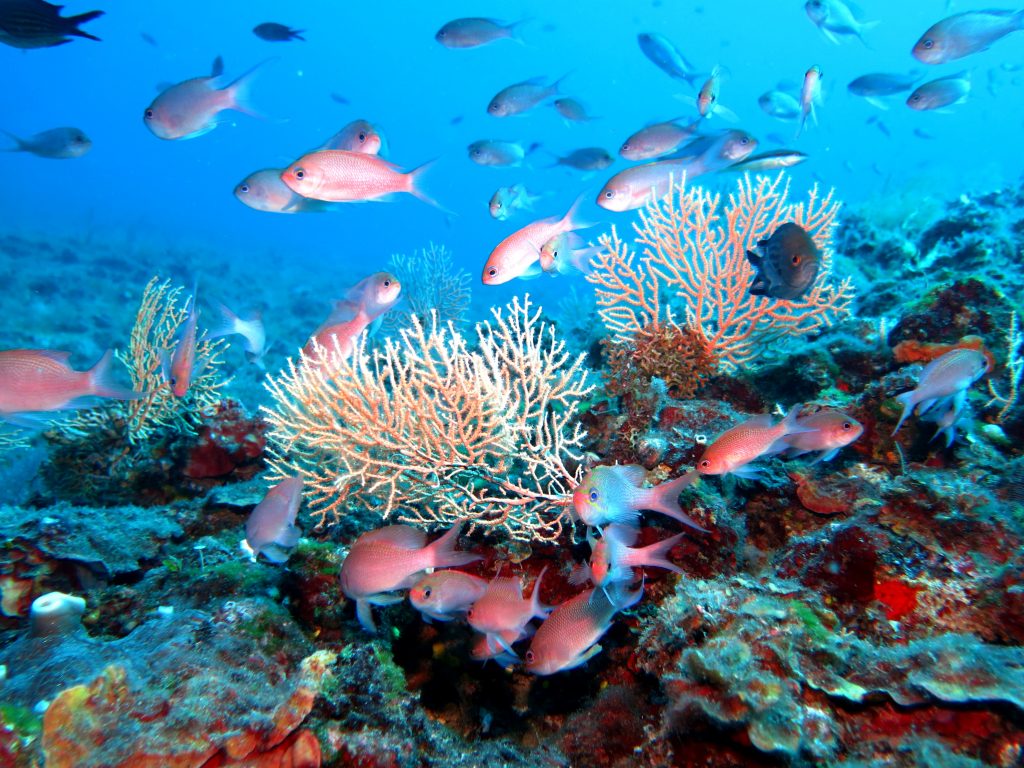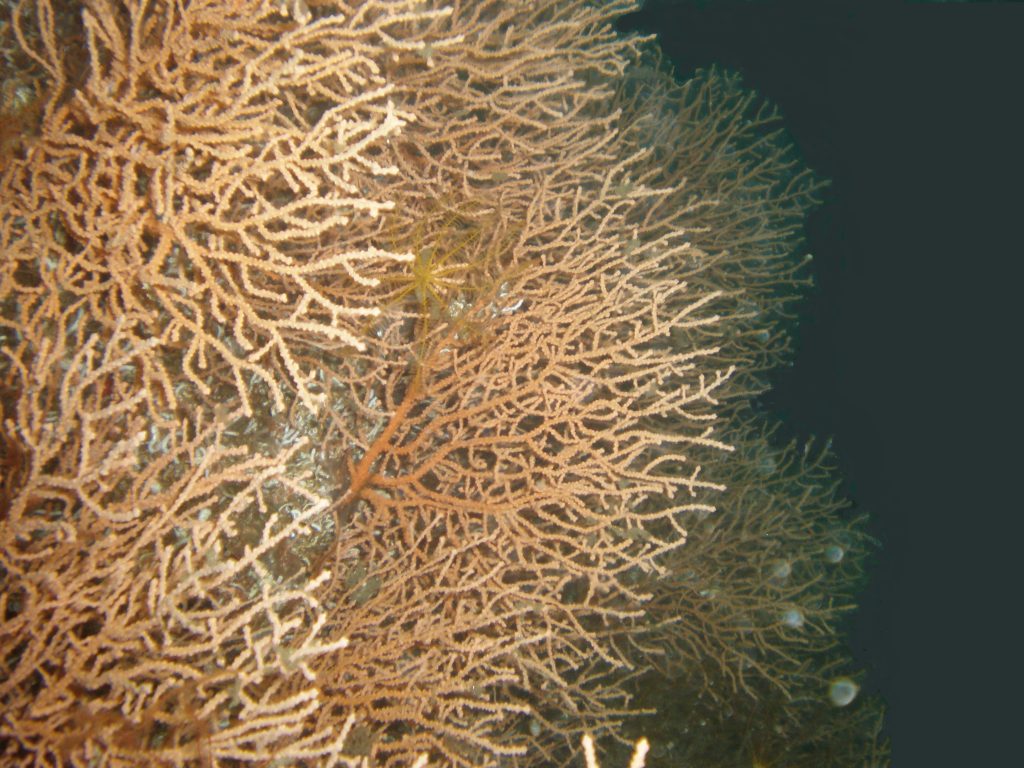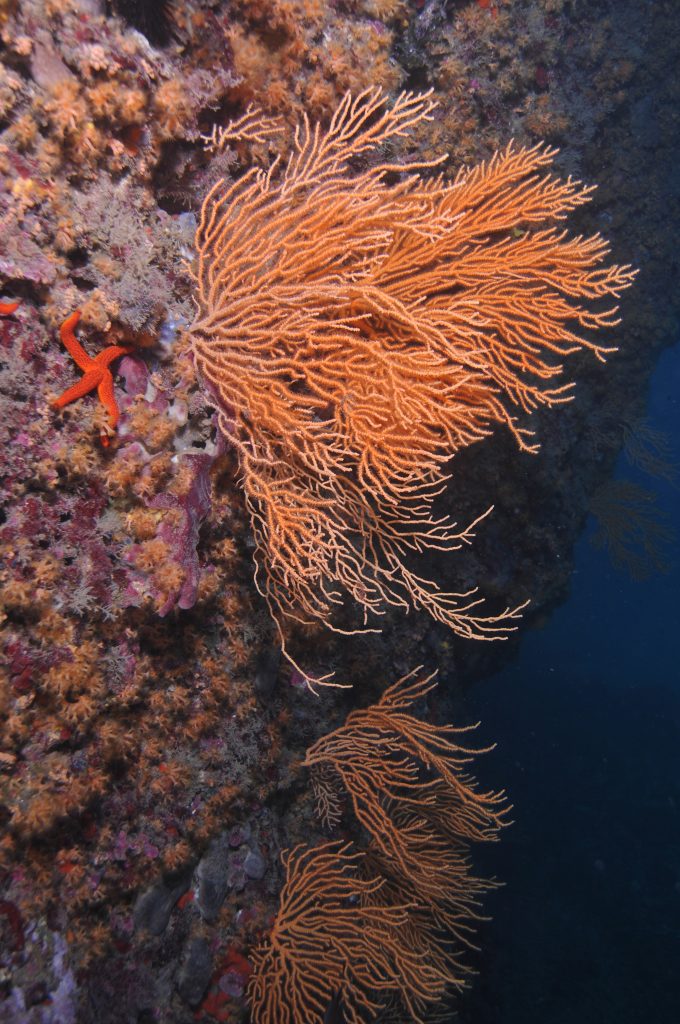The yellow gorgonian Eunicella cavolini is one of the most common Mediterranean gorgonians. It can be found in the Western and Eastern basins, at depths varying from less than 10 m to more than 100 m. This species has been affected, along with other sessile species, by mortality events linked with thermal anomalies. E. cavolini is also affected by other disturbances such as fishing and sedimentation linked with human activities. It can be found in more or less polluted areas, such as near the Cortiou sewage outfall in Marseille. This species presents a genetic differentiation at relatively short distance, and different levels of thermotolerance according to depth. The bacterial diversity of this species has been studied, which paves the way to more extended studies of the holobiont in different conditions, areas, and at different taxonomic levels.
The presence of this species in these different ecological conditions makes it a good model to study its response to local and global pressures. Considering its ecological interest (gorgonian forests provide habitats for other marine species), the results of our project will have a general interest for the conservation and management of marine biodiversity, especially in protected areas such as the Calanques National Park.
References:
Bayer, T., Arif, C., Ferrier-Pagès, C., Zoccola, D., Aranda, M., & Voolstra, C. R. (2013). Bacteria of the genus Endozoicomonas dominate the microbiome of the Mediterranean gorgonian coral Eunicella cavolini. Marine Ecology Progress Series, 479, 75-84.
Cánovas-Molina, A., Montefalcone, M., Bavestrello, G., Masmoudi, M. B., Haguenauer, A., Hammami, P., … & Aurelle, D. (2018). From depth to regional spatial genetic differentiation of Eunicella cavolini in the NW Mediterranean. Comptes rendus biologies, 341(9-10), 421-432.
La Riviere, M., Garrabou, J., & Bally, M. (2015). Evidence for host specificity among dominant bacterial symbionts in temperate gorgonian corals. Coral Reefs, 34(4), 1087-1098.
Masmoudi, M. B., Chaoui, L., Topçu, N. E., Hammami, P., Kara, M. H., & Aurelle, D. (2016). Contrasted levels of genetic diversity in a benthic Mediterranean octocoral: Consequences of different demographic histories?. Ecology and evolution, 6(24), 8665-8678.
Pivotto, I. D., Nerini, D., Masmoudi, M., Kara, H., Chaoui, L., & Aurelle, D. (2015). Highly contrasted responses of Mediterranean octocorals to climate change along a depth gradient. Royal Society open science, 2(5), 140493.
Sini, M., Kipson, S., Linares, C., Koutsoubas, D., & Garrabou, J. (2015). The yellow gorgonian Eunicella cavolini: demography and disturbance levels across the Mediterranean Sea. PloS one, 10(5), e0126253.
Topçu, E. N., & Öztürk, B. (2015). Composition and abundance of octocorals in the Sea of Marmara, where the Mediterranean meets the Black Sea. Scientia Marina, 79(1), 125-135.


